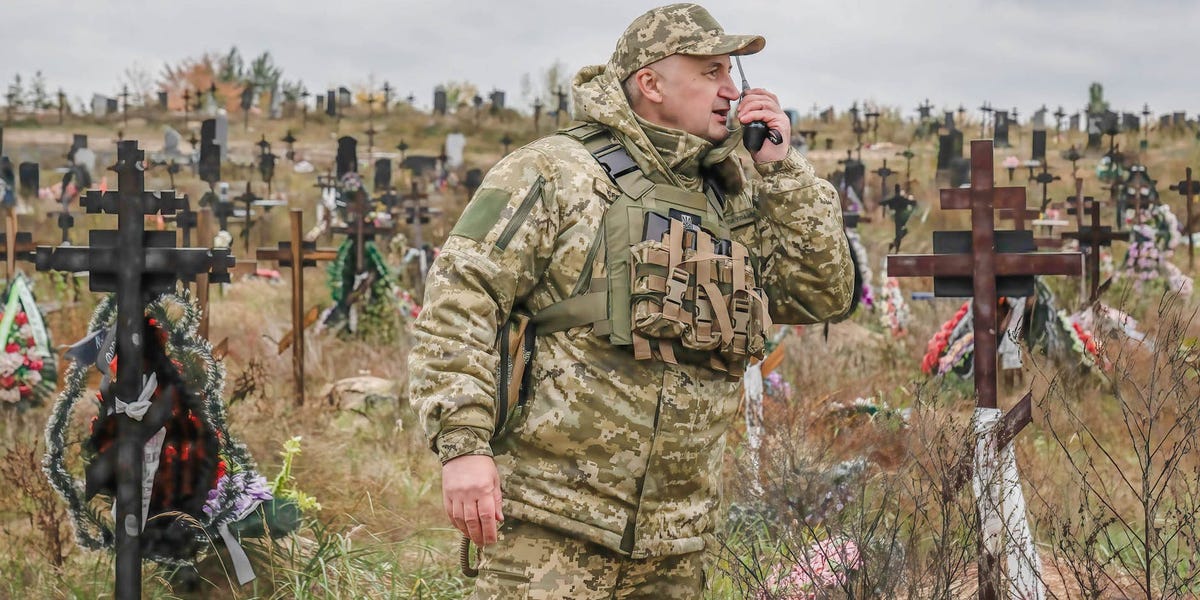Russian Special Forces Unit Losses Heavy in Ukrainian Offensive
- Ukrainian troops surrounded Lyman, Ukraine, during the counteroffensive in Ukraine this autumn.
- Lyman is a key hub in eastern Ukraine. A larger Russian force was also trapped there.
- Russian troops in Lyman suffered heavy losses and those who retreated suffered heavy losses, including an elite GRU unit.
As September approached, everyone expected that the Ukrainian military would launch an attack on Kherson in southern Ukraine.
The US-supplied M142 High Mobility Artillery Rocket Systems were used by Ukrainian forces to launch long-range precision strikes against Russian supply lines in southeastern Ukraine for several weeks.
The Russians and the entire world were shocked when the Ukrainians launched an aggressive counteroffensive to the east of Kharkiv in Ukraine’s second largest city. Within a matter of days, hundreds of miles of territory was liberated by the Ukrainian forces.
The fact that the Russian high command had decided to mass considerable forces in the south to defend Kherson, which Moscow ended up retreating from in November, aided Kyiv’s counteroffensive, which sliced through Russian lines like a hot knife through butter and repeatedly flanked large Russian formations — including at a major logistical hub in far eastern Ukraine.
The Battle for Lyman
YASUYOSHI CHIBA/AFP via Getty Images
The Ukrainian forces quickly made Lyman the focal point of attention. partially surroundedIt was captured by a large Russian garrison there in the last days of September.
Lyman, a key logistical node, commands an important road crossing the Siverskyy Donets River in Ukraine’s Donetsk Region. Its loss added to Russian setbacks in summer’s final weeks and stoked anger among Russian pro-war commentators.
British military intelligence concluded after the battle, that the Russian force defending Lyman consisted of a mixture of depleted professional units and mobilized reserveists.
The Ukrainians offered Lyman’s large number of Russian troops a chance to surrender to them. The Russians chose to retreat under cover, but suffered heavy casualties due to long-range and Ukrainian ambushes.
Andriy Andriyenko/SOPA Images/LightRocket via Getty Images
After the battle, you will be able to enjoy the BBC’s Russian serviceReports indicate that the GRU’s 3rd Guards Spetsnaz Brigade reconnaissance company was captured in battle and suffered heavy casualties. It lost as many as 9 members in one battle, which is the highest number of such losses in wartime.
The BBC estimates 56 deaths of brigade members since February’s invasion by Moscow based on its own research as well as that of volunteers and Russian media. Although the brigade’s exact size is not known, the BBC estimates that 75% of its troops have been killed or injured so far, based upon the attrition rates for Russian units in Ukraine.
The BBC based its report on Lyman’s death on interviews with family members as well as a review of posts from VKontakte between September 30th and October 1st.
According to a translation from VK, one VK user stated that the brigade had been “thrown in the meat grinder” and “laid to waste”. The Moscow Times.
Hard to replace
Konstantin Morozov/Russian Ministry of Defense/Mil.ru
The GRU is Russia’s military-intelligence agency. It can carry out a variety of missions, including human intelligence, cyberspionage, and assassinations. Its Spetsnaz commandos are among the most elite in the Russian military.
It will be difficult to replace these losses. Special operators who are competent require years of military training, both basic and advanced, as well as training that is tailored to their mission. Their militaries have spent millions of dollars to prepare them before they can join an operational unit.
One of the US special-operations community’s core principlesThe fact that “special operation forces cannot be mass produced” and that the US training pipeline can last for years is proof of this.
It can take six to eight months for soldiers to go through boot camp and be selected and assessed to join the 75th Ranger Regiment. The 75th Ranger Regiment is the world’s most elite light infantry special operations unit. To become a Navy SEAL or Air Force Pararescueman, it may take more than a decade.
Ashley Chan/SOPA Images/LightRocket via Getty Images
After years of military training, tier one US special-operations units like the Army’s Delta Force need additional selection and operator training. This can take over six months and can make it difficult to recruit even experienced troops.
The whole Russian military is under severe pressure in Ukraine, although casualty estimates vary widely. In November, Gen. Mark Milley, the top US military general, stated that Russia had likely suffered “well over 100,000” Troops killed and wounded
Moscow launched a “special military operations” with only a small portion of its military. It has since announced a “special military operation”.partial mobilization“To call up more troops. Its losses were so great that special-operations soldiers have often been used as regular troops to plug holes in Russian lines.
Poor planning also led the misuse of elite Russian units like the lauded VDV airborne forces. battered in a failed effort to capture an airportNear Kyiv in war’s first days.
Stavros Atlamazoglou, a defense journalist who specializes in special operations, is a Hellenic Army veteran (national military service with the 575th marine battlion and Army Headquarters) and a Johns Hopkins University alumnus. He is currently working towards a master’s level in strategy and cybersecurity from the Johns Hopkins School of Advanced International Studies.
[Denial of responsibility! newsanyway.com is an automatic aggregator of the all world’s media. In each content, the hyperlink to the primary source is specified. All trademarks belong to their rightful owners, all materials to their authors. If you are the owner of the content and do not want us to publish your materials, please contact us by email – at newsanyway.com The content will be deleted within 24 hours.]

